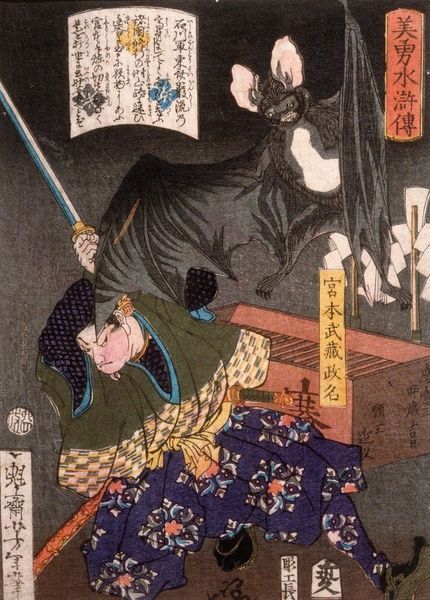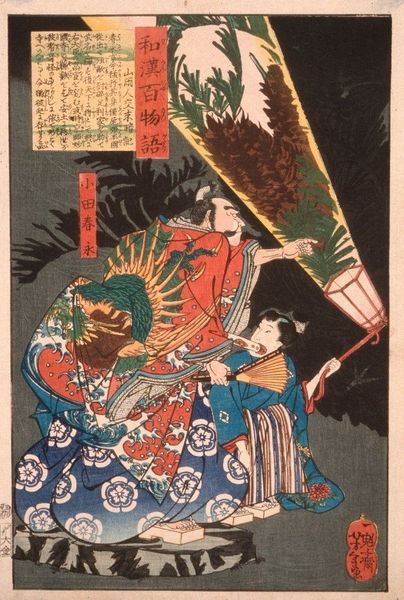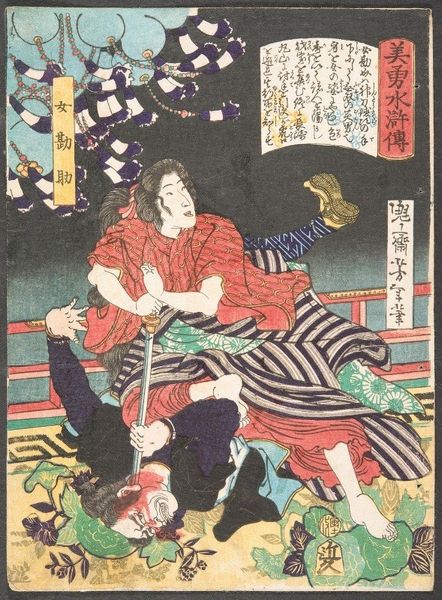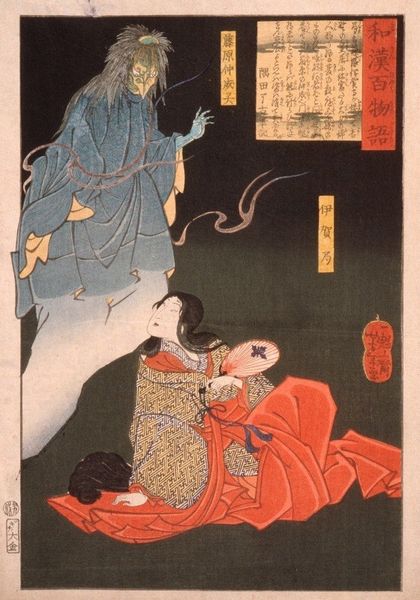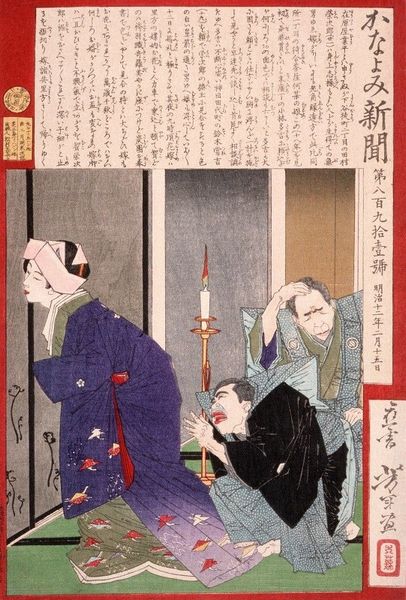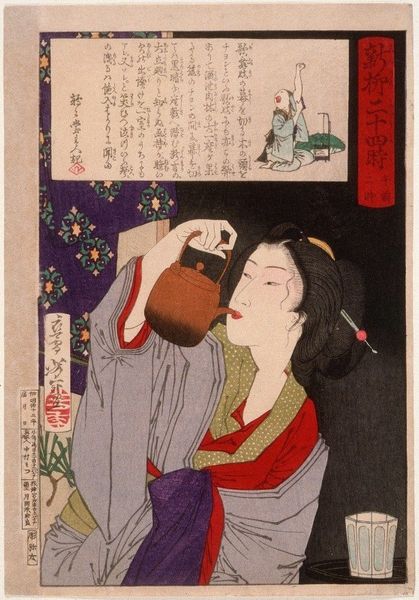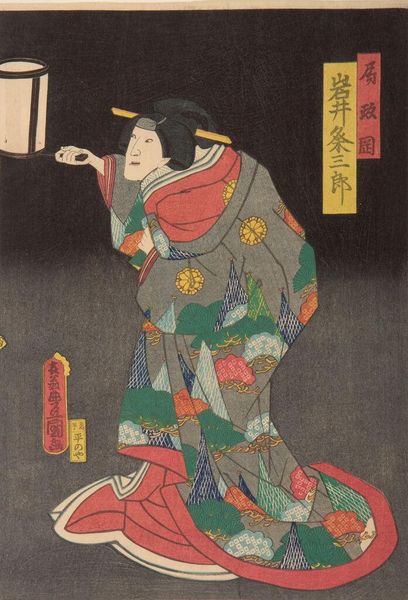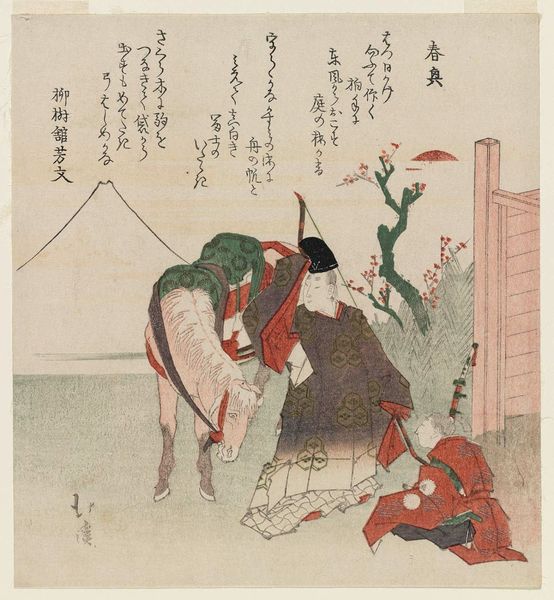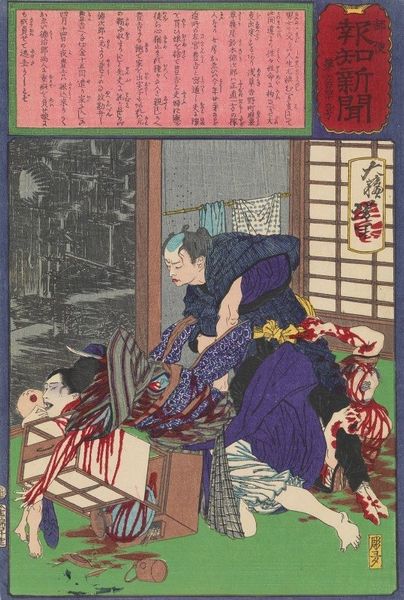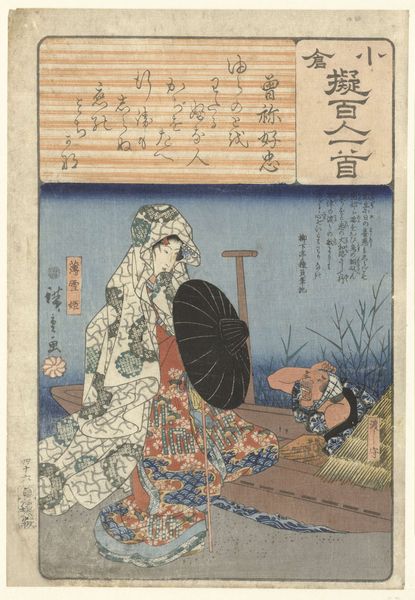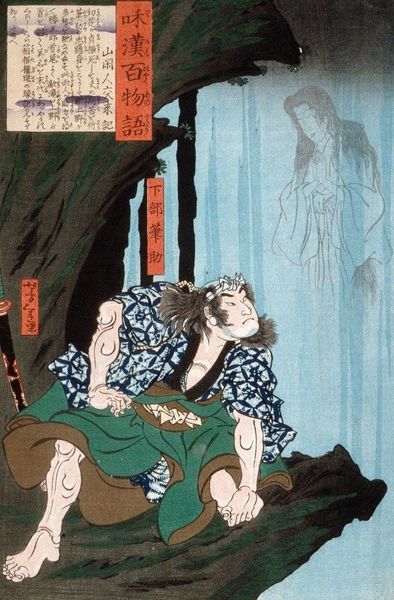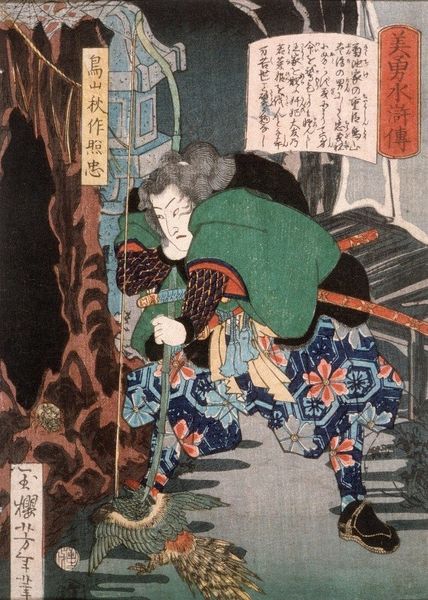
Copyright: Public Domain: Artvee
Editor: This vibrant print, "Hanai Oume Killing Minekichi" by Tsukioka Yoshitoshi, dates to 1877. It's striking—the high contrast and stark imagery create such a dramatic scene! I am really intrigued by how the image is rendered, what are your impressions? Curator: My immediate thought is the changing role of prints within Meiji-era Japan. These single-sheet prints like Yoshitoshi’s were transforming from purely artistic expressions into something resembling news media, disseminating information, and shaping public perceptions of events and figures. What story do you think this print tries to capture, and what aspects would catch the eye of viewers in 1877? Editor: Given the title, it depicts a murder, so probably sensationalist news of the time. But why immortalize such a gruesome act? Curator: Precisely. Crime prints, or *muzan-e*, fulfilled a societal function by broadcasting morals. These works often featured depictions of real events, where criminals were prominently displayed to symbolize a disruption of the social order. Think of it as a public display of the consequences of deviance, but the fine line between caution and exploitation might be blurred. The aesthetic presentation of violence, after all, could risk glamourising or sensationalising the event it tried to condemn. In what ways does the style and content reflect the complex interaction between artistic creation and cultural commentary? Editor: I hadn't considered how the print functions as both art and a form of social commentary or warning. Looking at it now, the dramatic use of colour seems deliberately chosen to amplify those messages. Curator: Indeed. Yoshitoshi’s decision to highlight the brutal reality in his depiction tells us about a culture wrestling with modernity, clinging to traditional didactic modes while facing the rapid expansion of information. Editor: I now understand the cultural layers underneath this seemingly simple print. It has provided me new ways to analyze the convergence of aesthetics, information, and morality.
Comments
No comments
Be the first to comment and join the conversation on the ultimate creative platform.
